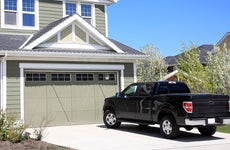Average cost of car maintenance

The Bankrate promise
At Bankrate we strive to help you make smarter financial decisions. While we adhere to strict , this post may contain references to products from our partners. Here's an explanation for .
The price of vehicle ownership adds up. When the time comes to purchase your next car, you must consider the true cost of vehicle ownership — trips to the mechanic included. Though services range in cost, AAA found that drivers put an average of $10,728 toward their new cars in 2022 — not including the purchase price. This is a $1,062 increase from the previous year.
As gas prices rise, it is important to prepare for vehicle costs when budgeting for which car is right for you.
Key car maintenance statistics
- The average cost to operate a new car in 2022 was $10,728 (AAA)
- The average driver spends $2,014 per year for full coverage car insurance (Bankrate)
- License, registration and vehicle taxes cost $675 per year (AAA)
- Drivers of newer vehicles should get their oil changed every 5,000 to 7,500 miles (AAA)
- 1 in 3 drivers can’t afford unexpected vehicle repairs (AAA)
- 7.9 percent of drivers have delayed their vehicle’s routine maintenance (Automotive Research)
Routine maintenance
Routine vehicle maintenance keeps your car running the way it should and, by extension, keeps you and your passengers safe. Maintenance costs vary by vehicle type, age and location, but there are some basics that almost every car needs.
Typically, your vehicle will need a visit to the mechanic for overall upkeep every 5,000 or so miles. But check your owner’s manual for specifics on your car’s needs.
While mechanics are there to help you, they are also aiming to make money. So while most maintenance does require professional help, consider what you can handle at home to save money.
| Maintenance | Frequency | Expected cost |
|---|---|---|
| Oil change | Every 5,000 to 7,500 miles | $20 to $75 |
| Basic inspection | Every 5,000 miles | $150 to $250 |
| Tire rotation | Every 5,000 to 8,000 miles | $35 to $100 |
| Wiper replacement | Every six months | $50 to $61 |
| Brake pad replacement | Every 10,000 to 20,000 miles | $115 to $300 per axle |
Replacing parts
You will almost certainly have to replace some parts on your vehicle, either due to general wear-and-tear or larger issues.
No matter the reason, the replacement’s price tag depends on the part that needs replacing. Mechanics may not have the exact extra batteries, transmission or brakes your vehicle requires on hand, and delivery takes time. Outside of that, two common factors that influence cost are vehicle type — luxury vehicles carrying higher costs for parts — and the market cost. Consumers are also directly impacted by an increase in cost from inflation and the availability of vehicle parts.
If you’re comfortable working with vehicles, you could save money by replacing your air filter yourself.
| Vehicle part | Frequency | Expected cost |
|---|---|---|
| New tires | Every six years or 25,000 to 80,000 miles | $45 to $250 each |
| Air filter replacement (engine and cabin) | Every 15,000 to 30,000 | $35 to $80 |
| Brake pad replacement | Every 10,000 to 20,000 miles | $115 to $370 |
Unexpected repairs
Surprise costs are bound to come up in vehicle ownership. This could be an unexpected spill that stains the interior of your car or something more serious like a fender bender. Either way, it is important to have extra money saved in case unexpected repairs pop up.
AAA found that nearly one in three drivers cannot afford a bill for an unexpected repair. While these costs are mostly out of your control, you can save future stress by budgeting for that worst-case scenario.
It is also wise to shop around and find a repair shop with a good reputation and fair prices. Contact your insurance company and see what is covered before spending money on a repair. Here’s an outline of common repairs that may come up and the costs that are associated with them.
| Unexpected repair | Expected cost |
|---|---|
| Flat or blown tire | $10 to $250 |
| Transmission issue | $1,200 to $5,000 |
| Weather-related damage | $1,000 to $3,500 |
| Minor collisions | $50 to $3,000 |
| Engine overheating | $100 to $1,500 |
| Dead battery | $45 to $350 |
| Broken starter motor | $150 to $1,100 |
Cost by brand
The out-the-door price of a higher-end vehicle is higher than that of a standard car — and its maintenance will carry a higher cost, too. Your warranty may even require you to handle maintenance at a specific dealership, even for simple things like oil changes and mileage inspections. The dealer experience tends to be more expensive but does carry the comfort of mechanics that specialize in your car’s make and model.
While it may seem obvious that mid- and high-end vehicles require high-end upkeep, this is not always the case. Take Dodge, for example. Although it is a mid-tier option, the five-year maintenance cost nears what Mercedes drivers must pay.
Consider the value that comes with a vehicle, which can come down to how many times you will have to take it to the body shop. But even regular costs — like gas — can be more expensive if you have to opt for premium fuel. Research the average annual costs of vehicle brands to estimate how much a car will cost you over the course of ownership.
| Vehicle brand | Cumulative 5-year maintenance costs |
|---|---|
| BMW | $930 |
| Chevrolet | $765 |
| Dodge | $905 |
| Ford | $735 |
| Honda | $975 |
| Kia | $975 |
| Mercedes | $1,770 |
| Nissan | $890 |
| Subaru | $1,030 |
| Toyota | $685 |
Consumer Reports 2022 Annual Auto Survey
Cost by vehicle type
Although the brand of the vehicle clearly influences the cost of maintaining it, the type of vehicle is also a large determining factor. Broken down below is the average cost of ownership per mile of driving.
AAA found this cost by calculating the cost of depreciation, financing, fuel, insurance, licensing, registration, taxes, maintenance, repairs and tires across five years of ownership and 75,000 miles. The lowest cost for vehicle maintenance goes to small sedans, while the half-ton pickup is the most expensive to maintain.
| Vehicle type | Cost of ownership in cents per mile |
|---|---|
| Small sedan | 54.56 |
| Medium sedan | 69.01 |
| Subcompact SUV | 61.64 |
| Compact SUV | 62.17 |
| Medium SUV | 75.37 |
| Midsize pickup | 70.25 |
| Half-ton pickup | 86.21 |
| Hybrid | 64.61 |
| Electric | 60.32 |
As these prices show, vehicle maintenance is based on many factors, and there is no perfect recipe for finding an inexpensive car. But an electric vehicle or smaller vehicle tends to cost less. Electric vehicles are becoming more available across the market and can be a great option for drivers looking for lower maintenance costs.
The bottom line
Maintenance is unavoidable in vehicle ownership. But by understanding average costs, you can accurately budget for routine maintenance and surprise repairs. Research mechanics and consult your owner’s manual to confirm you are meeting your specific vehicle’s needs.
Related Articles



